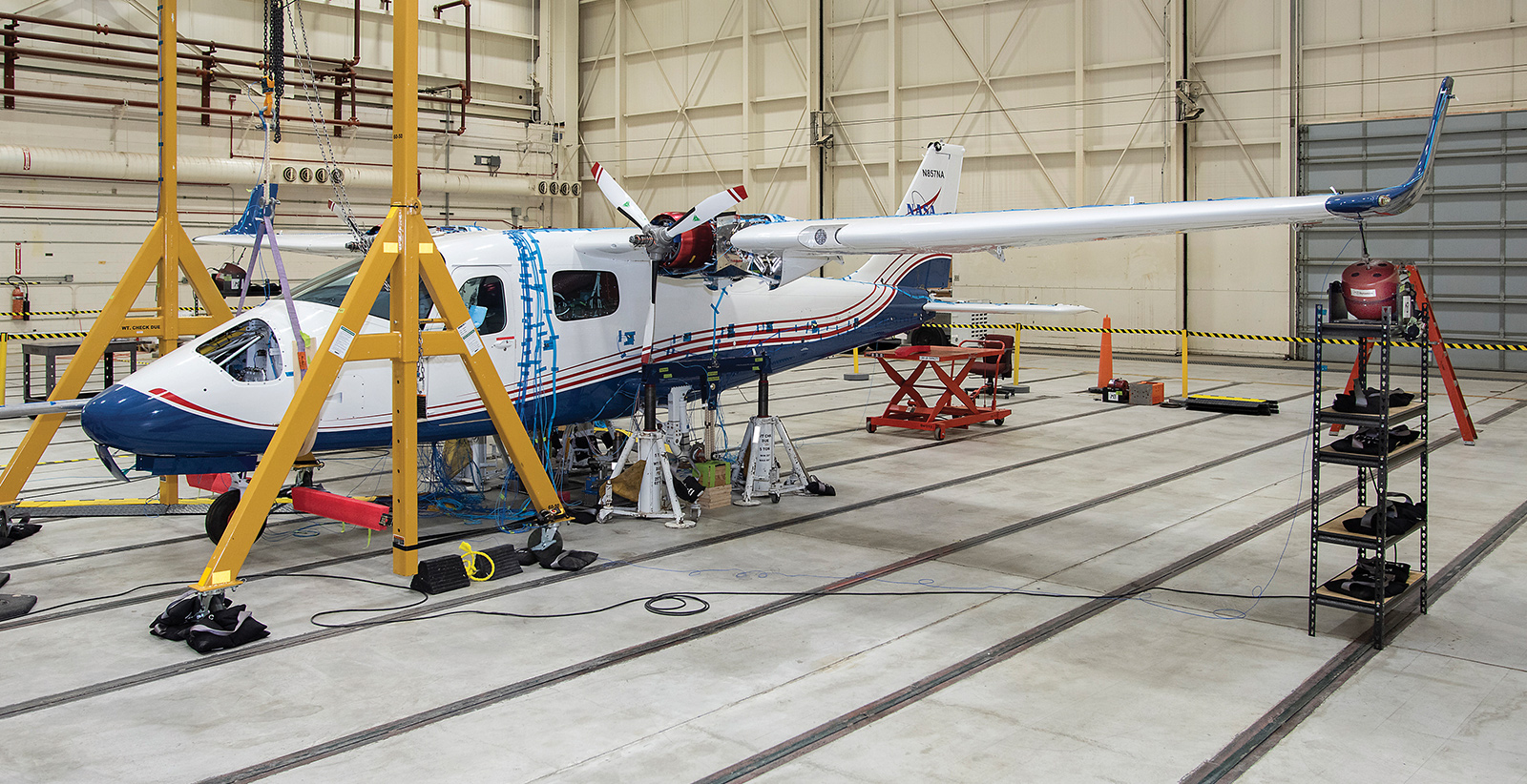Stay Up to Date
Submit your email address to receive the latest industry and Aerospace America news.
The Structural Dynamics Technical Committee focuses on the interactions among a host of forces on aircraft, rocket and spacecraft structures.
Paving the way for a next generation of aircraft, engineers and scientists at NASA’s Armstrong Flight Research Center in California and Langley Research Center in Virginia started working in early 2020 on correlating two finite element models, or FEM, for the X-57 Maxwell, NASA’s first all-electric piloted X-plane. The project is anticipated to validate electrical-powered flight with a five-fold increased cruise energy efficiency through several configuration modifications of the X-57. Researchers have data from two ground vibration tests that were performed on the Mod II aircraft and the Mod III Wing. In June 2019, researchers conducted the first ground vibration test on the X-57 Mod III Wing with the newly designed wing mounted on a loads test fixture. This test gathered the Mod III wing modal data, which Langley used to correlate the wing modes of the Mod III FEM.
Researchers performed a second ground vibration test in November 2019 on the X-57 Mod II aircraft with the aircraft on soft supports to simulate free-free flight boundary conditions. This Mod II test measured the aircraft structural frequencies and mode shapes, which Armstrong used to update and validate the Mod II aircraft FEM. After the FEM correlation, researchers will use the updated Mod II FEM in both the final classical flutter and whirl flutter analyses for evaluating aeroelastic airworthiness for the X-57 Mod II aircraft flights.
In a paper published in May in the Journal of Fluids and Structures, aeroelasticians at Imperial College in London, atmospheric scientists from the National Renewable Energy Laboratory in Colorado, and computer scientists at the Chinese National Supercomputer Center presented integrated turbulence-resolving simulations of the atmospheric boundary layer with full-vehicle nonlinear aeroelastic simulation. They had access to one of the world’s largest supercomputers, Sunway TaihuLight, to produce physics-based estimates of dynamic loads near the ground of high-altitude pseudo-satellites. Their results indicate that the sizing loads may be at least 50% larger than previously available estimates obtained.
In February and August, the University of Bristol in the United Kingdom performed experimental studies that consider the effect of floating folding wingtips on aircraft rolling behavior. They build on previous investigations into the benefits of such devices to enable reduced drag through increased aspect ratio while passively reducing gust loads. These tests showed that the roll rate of high-aspect ratio wing aircraft can be increased by employing such wingtips without the need for an increase in the control surface area. Moreover, the roll rate was shown to be similar to that of a wing without any extension, suggesting retrofitting an aircraft with such a device may be possible.
In launch systems, NASA completed in May early analysis of data from the second rollout of the 4.5-million-kilogram and 120-meter-tall mobile launcher transported on top of the crawler transporter from Kennedy Space Center’s Vehicle Assembly Building to Launch Pad 39B as part of an integrated system verification and validation test in preparation for the Artemis-1 launch. Data acquisition systems recorded acceleration time history responses throughout the structure, and operational modal analysis, or OMA, techniques aided in determining the mobile launcher on crawler transporter structural dynamic characteristics. Both time and frequency OMA techniques used together provided a method to understand the data and determine the actual modal responses. Results showed the mobile launcher to have nonlinear characteristics dependent upon the crawler transporter speed and ground winds. Data will be used to improve the accuracy of the mobile launcher finite element model in preparation for the first flight of the Space Launch System, the uncrewed Artemis-1, and subsequent flights.
Contributors: James C. Akers, Jonathan Cooper, Joel W. Sills Jr. and Natalie Spivey
Related Posts
Stay Up to Date
Submit your email address to receive the latest industry and Aerospace America news.




